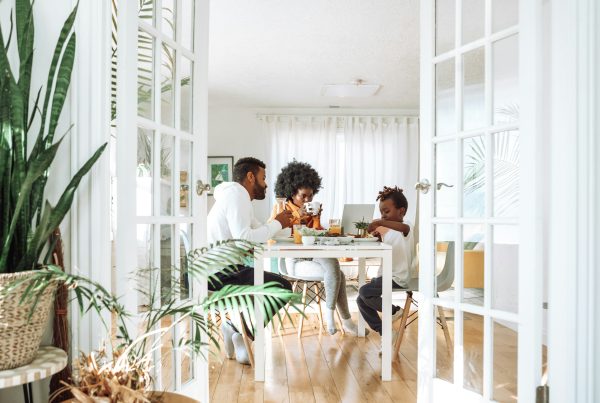According to the 2022 Buyer and Seller Insight Report from HomeLight, a technology platform used by hundreds of thousands of homebuyers and sellers, 18 percent of survey respondents said they underestimated the total cost of owning a home.
At Homeowners Financial Group, we believe in total transparency and providing people with the knowledge and information they need to make an informed, educated real estate transaction — because buying a home should be fun and exciting, not overwhelming or disappointing.
So, what goes into the total cost of homeownership, above and beyond the purchase price of the home itself? Here’s the list:
Down Payment
With a few exceptions (including VA loans for Military Veterans and USDA loans for homes in designated rural areas) all mortgages require you to pay some percentage of your home’s purchase price at closing. This amount can range from 3 percent (the minimum down payment required for a conventional loan) up to as much as you want to put down. Remember, with a few exceptions (like most of our jumbo loan programs) you will be required to pay private mortgage insurance (PMI) if your down payment is less than 20 percent.
Closing Costs
These are the fees associated with your loan that you pay to your lender and other third-party service providers at closing. These costs are generally 2-5 percent of the home’s total price (for a $250,000 home, you should budget $5,000 to $12,500 for your closing costs). They can include:
- Lender fees (origination, application, credit check, etc.).
- Prorated property taxes, homeowners insurance and homeowners association fees (if applicable).
- Home inspection.
- Home appraisal.
- Real estate attorney fees.
- Transfer tax.
- Title search and insurance fees.
The types and amounts of closing costs can differ somewhat if you have a government loan (FHA, VA, or USDA). Whichever type of loan you have, these costs will be outlined in your official Loan Estimate, which will also let you know which costs are non-negotiable and which you can shop around for a better price. There’s also the possibility that the seller will be willing to pay some of these costs for you, and you may be able to roll some of them into your loan.
Now for the ongoing costs of owning a home that kick in after closing:
PITIA
PITIA is an acronym for everything that comprises each monthly mortgage payment. It stands for “Principal, Interest, Taxes, Insurance, Association dues.” The principal goes toward your mortgage balance, while the rest goes toward other things associated with your loan and your home. If you have a fixed-rate mortgage, the principal and interest portion of your payment won’t change over time (although the mix of how much of the payment goes toward principal versus interest will change over the life of the loan; this is called amortization). Property taxes, insurance costs, and association dues (if you have them) can (and most likely will) fluctuate and affect your total PITIA payment each month.
Utilities
Perhaps you’ve only lived with your parents and they paid all of the household bills. Or maybe you’ve only been a renter and some or all of your utilities were included in your monthly rent payment. As a homeowner, it’ll be up to you to pay for gas, electricity, water, and everything else that keeps a home functional. The good news is, you have a fair amount of control over these costs based on where you set your thermostats, how often you leave lights on, and other lifestyle habits.
Maintenance & Emergencies
There’s always something you can tinker with around the house, from minor personal preference tweaks like upgrading a faucet to replacing major systems like heating and air conditioning. It’s smart to set aside some money each month for these expenditures if you can, because your parents or your landlord won’t be on the hook for them anymore.
If this seems like a lot, remember that millions of people just like you have become successful homeowners who have managed to pay all of these costs and lived to tell about it. You can do it too! The first step is to contact a Homeowners Licensed Mortgage Professional and get the ball rolling on your homeownership dreams. Yes, those dreams come with a price, but if you’re prepared for the costs, you might just find that the freedom and satisfaction of owning your own home are priceless.





